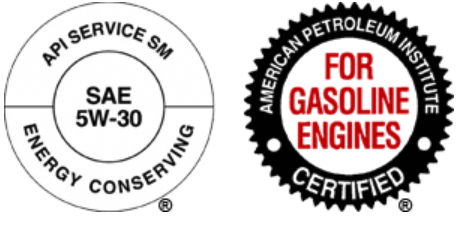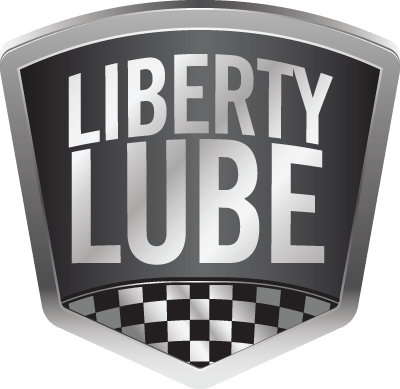ENGINE OIL
The automotive engine has and continues to undergo significant changes as new fuel economy and emission standards push for the development of new technologies. As a result, new engine oil formulations and oil filtration products must meet or exceed the new performance specifications and demands.

ENGINE OILS PRIMARY FUNCTIONS
Engine oils are mixtures of base oils (refined crude oil) and formulations, added to improve an engine oils performance. These additives are designed to perform a variety of functions within the engine which include:
- Reducing engine wear.
- Separating and lubricating moving parts.
- Removing and suspending dirt and contaminants in the oil (these contaminants will be removed once the oil is removed).
- Helping prevent deposits from forming on internal engine components.
- Cooling the engine.
- Providing engine protection over a wide temperature range and
- Enhancing engine fuel economy through less drag for thinner viscosities.
Contaminants and bi products are formed inside your engine as part of the normal combustion process. When an engine accumulates such debris, it can greatly reduce and even block oil cooling ports within the engine. When your engine components and oil passages become dirty or blocked by sludge, your vehicles performance and efficiency suffer as well as reducing the life of the engine. It is essential to select an oil that is API / ILSAC approved to meet your manufacturers performance specifications.
The API/ILSAC “Starburst”
You see this symbol on many quality oils. API is an acronym for the American Petroleum Institute. The institute’s Starburst stamp of approval—it reads “American Petroleum Institute Certified”—was created to help consumers identify engine oils that meet specific performance standards set by vehicle and engine manufacturers.

The Starburst identifies engine oils recommended for a certain application, such as “For Gasoline Engines.” To carry this symbol on the container, the oil must meet the most current requirements of ILSAC, which is the International Lubricant Standardization and Approval Committee, a joint effort of U.S. and Japanese automobile manufacturers.
The European Engine Lubricants Quality Management System (EELQMS) is a quality system for automotive engine lubricants that are designed to meet the minimum performance requirements of leading European vehicle manufacturers. It the equivalent to API / ILSAC.
These requirements are set out in specifications established by ACEA (the European Automobile Manufacturers Association), which represents leading car, van, truck and bus makers.
TYPES OF MOTOR OIL
Synthetic Motor Oils
These oils are chemically engineered with fewer impurities and better properties than base oils (refined crude oil). Synthetic oils are formulated with higher performing additives, provides higher viscosity levels improving fuel efficiency and can even increase a vehicle’s horsepower by reducing engine drag, they offer better protection at startup, have a greater resistance to oxidation and thermal breakdown, and their properties help fight against oil sludge. Full synthetic oil is ideal for vehicles that demand peak level performance and high levels of lubrication and is a common requirement for new vehicles. If you live in a climate with super cold winters or very hot summers or use your vehicle for towing hauling or long idle times, synthetic oil may be the best type of oil for your vehicle.
Semi-Synthetic or Semi-blend motor oils
Semi-synthetic oils use a mixture of synthetic and base oil. It contains many of the characteristics of full synthetic oil at significantly reduced percentage. It is recommended for cars, trucks, vans and SUVs.
A semi synthetic oil is a preference and not a requirement by vehicle manufacturers.
High-mileage motor oil
This oil is specially blended for older vehicles, or vehicles with 120,000KM or greater. This oil has unique additives and viscosity which helps reduce oil consumption through oil burn-off and therefore reducing emissions in older engines.
Conventional motor oil
Although its use is on the decline, it is the most commonly used type of engine oil. It is ideal for vehicles with low to average mileage and where peak engine performance is not a concern. It is a base oil (refined crude oil) enhanced with additives to help meet the manufacturer's desired levels of heat tolerance, breakdown resistance and viscosity.
Conventional motor oil can be had in a range of viscosity grades and quality levels, from adequate to an extensively designed, high-quality lubricant.
Don’t be fooled as there are many misconceptions between required and recommended oils for different manufactures. It is imperative that you confirm with your owner’s manual, the oil requirement for your specific make and model so you don’t run the risk of engine problems or void your warranty.
ENGINE OIL ADDITIVES & FORMULATIONS
Engine Oil Additives & Formulations
Use of additives, or better yet, choosing an oil that already contains these formulations is another approach to improving and maintaining oil performance.
High engine temperatures combine with moisture, combustion byproducts (including unburned gasoline), rust, corrosion, engine-wear particles, and oxygen to produce sludge and varnish. The additives not only assist oil in maintaining good lubrication, they also help minimize sludge and varnish and the damaging effects from their formation. Listed below are some of the key additives:
Viscosity-index improvers:
This reduces the oil's tendency to change viscosity as temperature changes.
Detergents:
They remove some deposits, primarily solids, however; their main purpose is to keep high temperature surfaces clean by inhibiting the formation of high-temperature deposits, rust, and corrosion. These detergents are consumed and diminished throughout the oil change interval. Another reason to be diligent with proper oil maintenance.
Pour-point depressants:
These are used to provide good oil flow at low temperatures. Even though the oils viscosity rating is low, that doesn't mean the oil will readily flow at low temperatures. This is crucial in cold weather starting and the oils ability to protect the engine.
Dispersants:
This additive helps disperse solid particles into solution and keeping them suspended in the oil. They also prevent the suspended contaminants from forming together to form sludge, varnish, and acids.
Antioxidants:
Engine temperatures are increasing as the result of improved design for better emissions control. The antioxidants are necessary to prevent oxidation (the exposure of oil to oxygen at high temperatures), and as a result a thickening of oil, sludge and deposits.
Anti-wear agents:
As lubricating film breaks down due to high temperature and friction, the anti-wear agents must protect the metal surfaces especially on piston rings and cylinder walls. Anti-wear agents coat these surfaces and are consumed throughout the life of the oil change interval.
Friction Modifiers:
These are not the same as anti-wear agents. They reduce engine friction under high loads and temperatures, thus maintaining efficiency and fuel economy. This additive also diminishes throughout the life of the oil change interval.
Foam Inhibitors:
Foam / air bubbles are created as the crankshaft splashes through the oil in the oil pan. Foam generation makes it difficult for the oil to pump to essential engine parts and therefore, reduces lubricating and cooling properties of the oil. Foam inhibitors are used to cause the foam bubbles to collapse.
Rust/Corrosion Inhibitors:
The natural fuel combustion process creates rust and corrosion bi products. These inhibitors coat and protect the metal surfaces and pars from acids and moisture.
WHEN SHOULD YOU CHANGE YOUR ENGINE OIL?
There are certainly many misconceptions regarding this interval. Let’s keep it simple. What is a great resource of information regarding your make and model vehicle? Your owner’s manual. Secondly only you are aware of the driving habits and environments your vehicle is driven. Two very key considerations when utilized with your owner’s manual.
Always refer to your owner’s manual for specifications time intervals and in some cases an oil code. In order to maintain your vehicles engine output performance and warranty, it is essential to change your engine oil no later than recommended by the vehicle manufacturer, however; this oil change interval may be significantly reduced when considering your driving habits and environment.
Your vehicles change oil interval was specified with “ideal” driving conditions. If your typical driving routine includes any of the following conditions, your engine oil life and its protection properties will be reduced, therefore; the you oil change interval should be reduced.
- Travelling in a climate that experiences hot and cold temperature swings such as our Canadian climate.
- Extensive idling or frequent stop-and-go traffic.
- Extreme humidity.
- Your average trips are less than 10KM or your vehicle does not get up to operating temperature, especially in the colder months.
- Frequently driving your vehicle in dusty areas, such as on dirt or gravel roads, by farmlands and construction zones.
- If your vehicle is frequently used for towing a trailer or hauling materials, placing extra work loads on the engine.
Remember;
Don’t be fooled as there are many misconceptions between required
and recommended
oils for different manufactures. It is imperative that you confirm with your owner’s manual, the oil requirement for your specific make and model so you don’t run the risk of engine problems or void your warranty.

